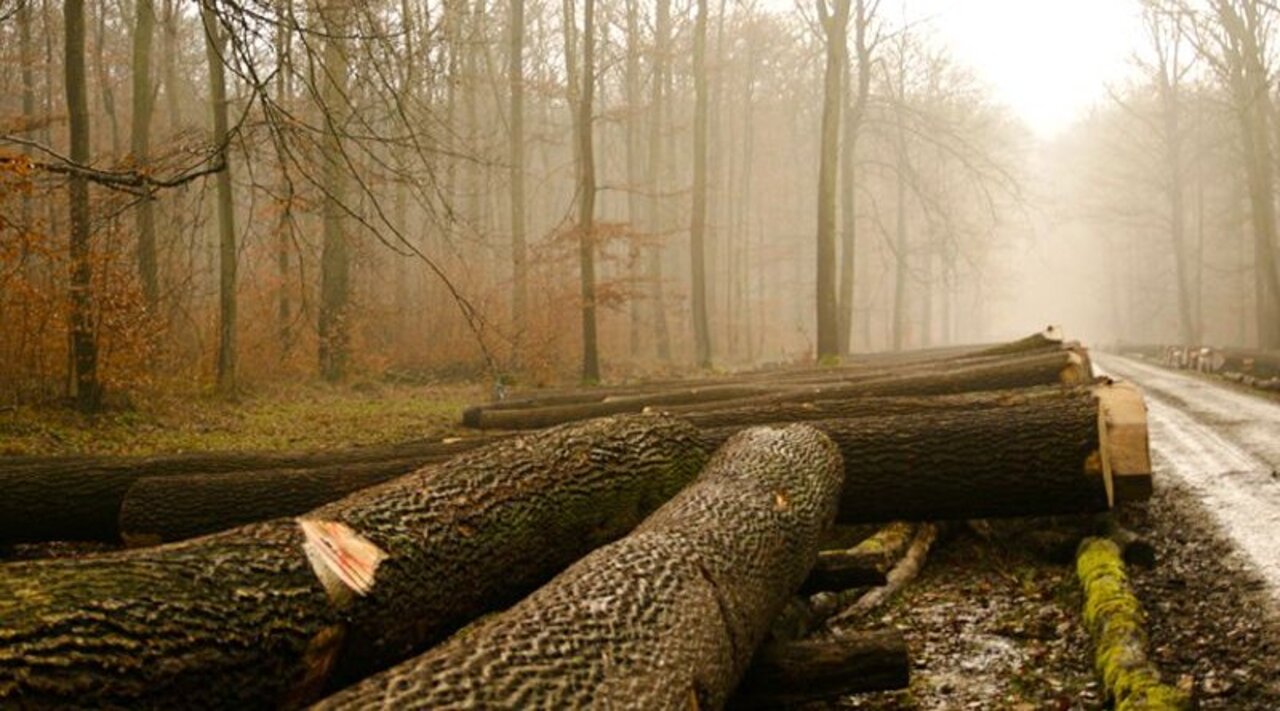Project
Forest Accountancy Data Network of the Federal Ministry of Agriculture, Food and Regional Identity

Forest Accountancy Data Network of the Federal Ministry of Agriculture, Food and Regional Identity
How has the economic situation of German forest enterprises changed? Which economic consequences could be expected due to policy changes? In order to answer these and other questions we analyse the Forest Accountancy Data Network (FAN) of the Federal Ministry of Agriculture, Food and Regional Identity (BMLEH). The results are also used as input data for other reporting systems.
Background and Objective
The FAN collects accountancy data of around 350 participating state, communal and private forest enterprises of ownership size class over 200 hectares. Annually about 650 natural, capital and business indicators are reported per forest enterprise on a voluntary basis.
Target Group
Forestry practice, statistical offices, science and policy advice
Approach
Annually we check the plausibility of the new data of the FAN in consultation with the Federal Ministry of Agriculture, Food and Regional Identity and enter it into our database. Further analysis is carried out depending on the specific research question.
Data and Methods
The analysis is based on TBN-Forest data from 2003 until today, and includes data from 350 state, cummunal and private forest enterprises, using around 650 individual key figures. Thus, a comprehensive record of economic and natural capital data is available.
Our Research Questions
The TBN-Forest supplies central input-data for the annual accounting of the German Economic Accounts for Forestry and for the Forest Accounting Framework. Specific issues with high relevance for forest practice, science and policy advice are identified and evaluated through an in-depth analysis of key figures of the TBN-Forest accountancy data network.
Preliminary Results
For a long time, revenue from timber sales has been the primary source of income for forest enterprises. However, the impacts of climate change may jeopardize this business model. In recent years, German forest enterprises have faced significant challenges due to widespread forest damage, global crises, and dynamic changes in the timber market. In a time-series analysis spanning 2007 to 2023, we examined how the revenue components of FAN forest enterprises have developed under the influence of these dynamic framework conditions.
The total revenue of forest enterprises fluctuates over the observed time period, reflecting the partly dynamic developments in the timber market. However, the revenue structure itself has not fundamentally changed over time. Timber sales, particularly in private and municipal forests, have consistently been the most important source of revenue by far. Other product areas play only a minor role in these two types of ownership. Only towards the end of the observation period does the importance of subsidies increase significantly.
A stronger diversification and the development of alternative sources of income by forest enterprises are not evident from the FAN results. However, the current set of FAN forestry key performance indicators is only conditionally informative in this regard. To be able to assess the performance and economic situation of German forest enterprises more comprehensively, conceptual adjustments and further developments of the FAN system would be desirable. In particular, information on the actual extent of damage and alternative business areas would be helpful in better describing the economic situation of the German forest enterprises.
Links and Downloads
Projectsite
- Further development of the German Forest Accountancy Network
- Figures & Facts |
Test network for forestry - Profitability of forestry operations
Up-to-date accounting results and further background information on the FADN Forestry
Thünen-Contact

Involved Thünen-Partners
Ehemalige Thünen-Mitarbeiterinnen und Mitarbeiter
Duration
Permanent task 1.2017
More Information
Project status:
ongoing
Publikationen
- 0
Franz K, Müller N, Seintsch B (2025) Die Welt ist dynamisch - die Ertragsstruktur von Forstbetrieben auch? AFZ Der Wald 80(23):24-27
- 1
Müller N, Franz K, Seintsch B (2025) The German Forest Accountancy Data Network (FADN) : needs analysis and conceptual development. In: Kus A (ed) Socioeconomic changes and challenges in the forest sector : acknowledging the role of managerial economics and accounting ; Proceedings of scientific papers, International IUFRO Conference, Research Group 4.05 Managerial economics and accounting, Prague, Czech Republic, May 13-16, 2025. Prague, Czech Republic: Czech University of Life Sciences, pp 16-24
- 2
Bürgi P, Müller A, Sekot W, Metzker M, Franz K, Pauli B (2025) Wie multiple Krisen die Ergebnisse der Forstbetriebe in der DACH-Region beeinflussen. Schweiz Z Forstwesen 176(6):312-319, DOI:10.3188/szf.2025.0312
- 3
Franz K, Seintsch B (2024) Frei Waldstraße oder auf dem Stock - wie verkauft der TBN-Privatwald? AFZ Der Wald 79(23):23-26
- 4
Franz K, Müller N, Seintsch B (2023) Streuung von zentralen Kennzahlen der TBN-Privatwaldbetriebe. AFZ Der Wald 78(23):18-21
- 5
Englert H, Cormon F, Rosenkranz L, Seintsch B (2019) Betriebskonzentrationen und Skaleneffekte im Privatwald. AFZ Der Wald 74(23):13-16
- 6
Englert H, Rosenkranz L, Seintsch B (2018) Abschätzung des nicht verwerteten Derbholzes. AFZ Der Wald 73(23):14-16
- 7
Seintsch B, Englert H, Neitzel C (2017) Vergleich einer Hochrechnung des TBN-Forst auf ASE- und BWI-Basis. AFZ Der Wald 72(23):11-13
- 8
Ermisch N, Franz K, Seintsch B, Englert H, Dieter M (2016) Bedeutung der Fördermittel für den Ertrag der TBN-Forstbetriebe. AFZ Der Wald 71(17):22-25
- 9
Lohner M, Appel V, Dieter M, Seintsch B (2016) Das TBN-Forst : ein Datenschatz für die deutsche Forstwirtschaft. AFZ Der Wald 71(17):10-11
- 10
Buhrmester C, Ermisch N, Englert H (2016) Ergebnisse körperschaftlicher und privater Forstbetriebe im FWJ 2014. AFZ Der Wald 71(17):16-17
- 11
Bürgi P, Sekot W, Ermisch N, Pauli B, Möhring B, Toscani P (2016) Forstbetriebe Zentraleuropas im direkten Leistungsvergleich : ein länderübergreifender Vergleich wichtiger forstbetrieblicher Kennzahlen gibt Aufschluss über die Wettbewerbsfähigkeit der Forstbetriebe in Deutschland, Österreich und der Schweiz. AFZ Der Wald 71(17):18-21
- 12
Bürgi P, Sekot W, Ermisch N, Pauli B, Toscani P (2016) Forstbetriebe Zentraleuropas im Wettbewerbsvergleich : Betriebswirtschaftlicher Vergleich von Kennzahlen deutscher, österreichischer und schweizerischer Forstbetriebe. Holz Zentralbl 142(31):779-780
- 13
Bürgi P, Sekot W, Ermisch N, Pauli B, Toscani P (2016) Forstbetriebe Zentraleuropas unter der Lupe : ein länderübergreifender Vergleich wichtiger forstbetrieblicher Kennzahlen gibt Aufschluss über die Wettbewerbsfähigkeit der Forstbetriebe in Deutschland, Österreich und der Schweiz. Wald Holz 97(4):24-27
- 14
Bürgi P, Sekot W, Ermisch N, Pauli B, Möhring B, Toscani P (2016) Forstbetrieblicher Kennzahlenvergleich Deutschland - Österreich - Schweiz. Schweiz Z Forstwesen 167(2):73-81, DOI:10.3188/szf.2016.0073
- 15
Bürgi P, Sekot W, Ermisch N, Pauli B, Möhring B, Toscani P (2016) Les entreprises forestières d'Europe centrale examinées à la loupe : une comparaison transnationale des principaux indicateurs des entreprises forestières en Allemagne en Austriche et en Suisse fournit des renseignement sur leur compétitivité. Fôret(4):10-12
- 16
Ermisch N, Seintsch B, Englert H, Dieter M (2016) Make-or-buy-Entscheidung in der Holzaufarbeitung. AFZ Der Wald 71(17):26-29
- 17
Ermisch N, Seintsch B, Englert H, Dieter M (2016) Regionalisierte Auswertungen - TBN-Forschungsfeld mit Potenzial. AFZ Der Wald 71(17):30-34
- 18
Christoffel A, Wrede E von, Seintsch B, Ermisch N (2016) Testbetriebsnetz Forst - Teilnehmerbetriebe im Interview. AFZ Der Wald 71(17):35-36
- 19
Bauer A, Buhrmester C, Ellermann W, Englert H, Ermisch N, Gehrke A, Hübner M, Jacobs H, Jander A, Seintsch B, Trein B, Ulbricht I, Wühr F (2016) Zuständigkeiten und Organisation des TBN-Forst. AFZ Der Wald 71(17):37-40
- 20
Ermisch N, Seintsch B, Englert H (2015) Anteil des Holzertrages am Gesamtertrag der TBN-Betriebe. AFZ Der Wald 70(23):14-16
- 21
Ermisch N, Seintsch B, Englert H (2015) Holzeinschlag des TBN-Forst im Vergleich zur BWI. AFZ Der Wald 70(23):11-13
- 22
Ermisch N, Seintsch B, Dög M (2014) Ergebnisse des Testbetriebsnetzes Forst des BMEL : das Jahr 2012 folgte dem positiven Trend der Vorjahre. AFZ Der Wald 69(23):18-20
- 23
Ermisch N, Seintsch B, Dieter M (2013) Analyse des TBN-Forst zum Erlösbeitrag der Holzartengruppen : Holzartengruppe Fichte 2003 bis 2011 konstant mit höchstem Erlösbeitrag. AFZ Der Wald 68(23):6-9
- 24
Ermisch N, Seintsch B (2013) Das Testbetriebsnetz Forst des BMELV : Teilnehmen lohnt sich! AFZ Der Wald 68(23):5-6
- 25
Seintsch B, Ermisch N, Dög M (2013) Ist ein Mehraufwand durch Schutz- und Erholungsleistungen nachweisbar? AFZ Der Wald 68(23):10-12








